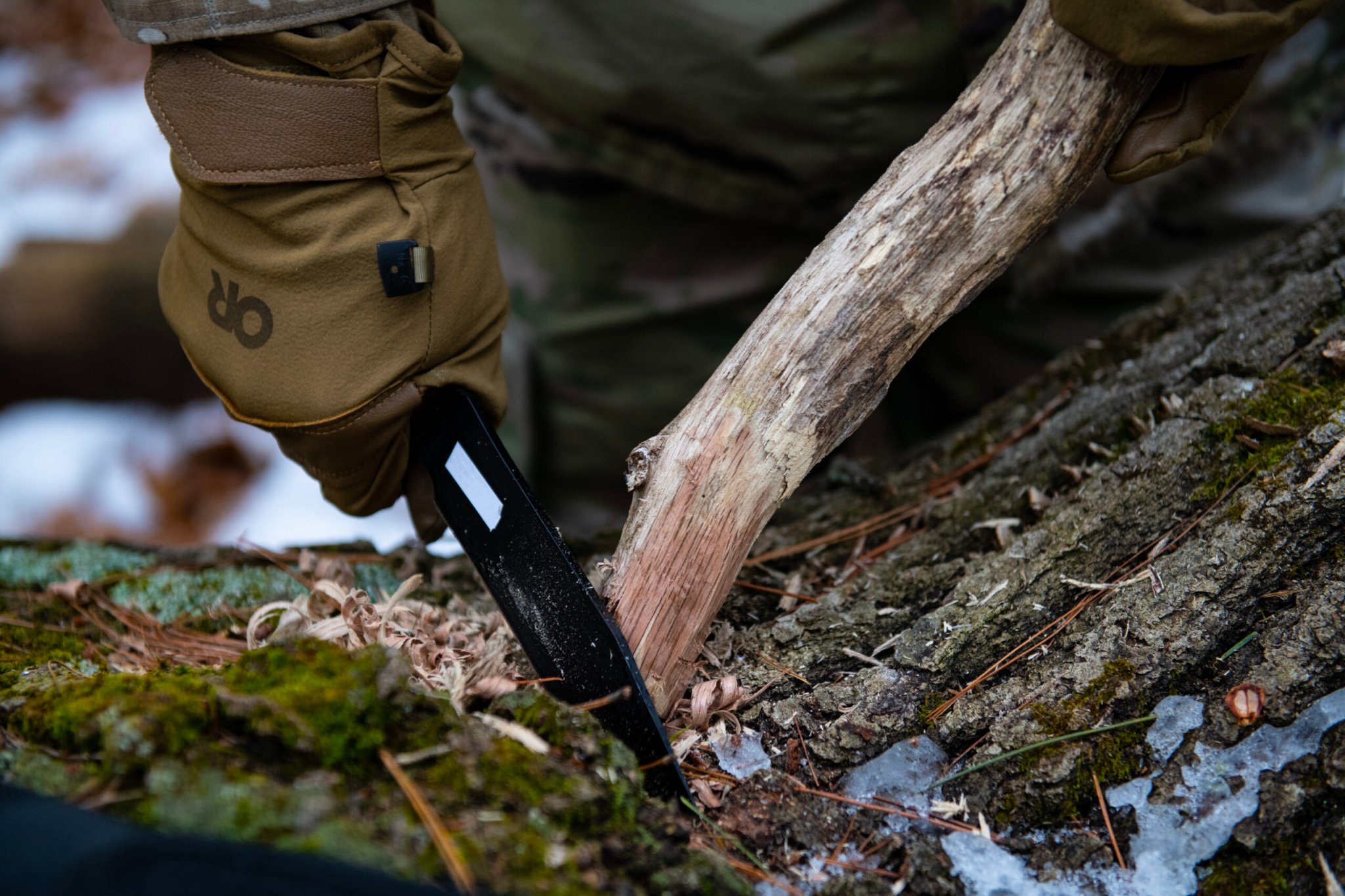

A well-made, consistently maintained knife is one of the most versatile tools a person can own. Whether you are a frequent outdoorsman or a connoisseur of the urban survival landscape, choosing the right knife is imperative.
What is the right knife made of, though? For a general-purpose outdoor survival knife, you need a blade that’s ready to go the distance on a variety of tasks. It needs to be sharp enough to filet a fish, yet hard enough to spark a fire with a stone. It needs to be light enough for easy carry, but hardy enough to take a beating.
Do you want a stainless steel blade?
“There is a diehard group that likes the high carbon steels for outdoor chores,” says Justin Gingrich, owner of Gingrich Tactical Innovations. “While they are tough, durable, hold an edge well, and are easy to field sharpen, their main drawback is of course rust and the elements.” The former Army Ranger-turned-custom knifemaker is a fan of stainless steel blades, though: “With modern stainless steels you can get the performance, toughness, durability and easy field sharpening without the worry of rusting.”

Stainless steel has some serious upside when considering a general-purpose blade. U.S.-made stainless knives usually contain at least 18% chromium (European countries sometimes use less), which creates a layer of protective oxidation that makes the knife extremely resistant to rusting. If you’re in a maritime environment, stainless blades are the way to go for that reason alone.
Subscribe to Task & Purpose Today. Get the latest military news and culture in your inbox daily.
Stainless steel’s rust-proof qualities make it easy to sterilize, too. This is why kitchen knives and medical blades primarily use stainless steel. The ability to have your knife sterilized for minor field surgery is a huge advantage.
There’s a downside to stainless, though: Chromium content dilutes the iron and carbon in a steel blade, which results in a loss of hardness and toughness. Chromium also hinders a blade’s ability to eject a spark when striking flint — something that may come in handy in a survival situation.
Or a blade made of high-carbon steel?
Tough carbon steel has some advantages that may not seem like a big deal until you’re in the middle of nowhere and just used your last match.
“I personally like high-carbon steel better in survival situations, because I think they hold an edge better and can be used to start a fire along with flint,” says Kaila Cumings, a custom knifemaker who knows her way around survival situations, as she proved last year on Discovery Channel’s “Naked and Afraid.” “If you are in a place where you can find quartz, you can also start a fire (although somewhat challenging) with a high-carbon knife and quartz.”

In addition to its fire-making street cred, carbon steel lacks high chromium content and the detrimental effects that come with it. Sure, that means the blade will rust easier, but if you keep it oiled, that shouldn’t be a problem. And if it does rust, a little bit of steel wool and elbow grease will have it back in good shape within minutes. The pressing question is whether you’ll have a way to keep it oiled or have access to steel wool, in a true, long-term survival situation.
Regardless of whether you go with old-fashioned, high-carbon, or rust-proof stainless steel, how much you get out of your knife will depend on more than just the composition of the blade. Buying from a reputable knifemaker, relentlessly maintaining the blade, and above all knowing how to use it, are all key factors. A knife is a tool, and a tool is only as good as the person using it.
The latest on Task & Purpose
- What you need to know about Biden’s IRR executive order
- Vet whose service dog died after violent arrest sues police
- Did Ukraine just assassinate a Russian submarine captain with his own Strava?
- Space Force NCO faces murder charges in shooting of two teens breaking into his Hyundai
- How the Air Force ran short of money for personnel
